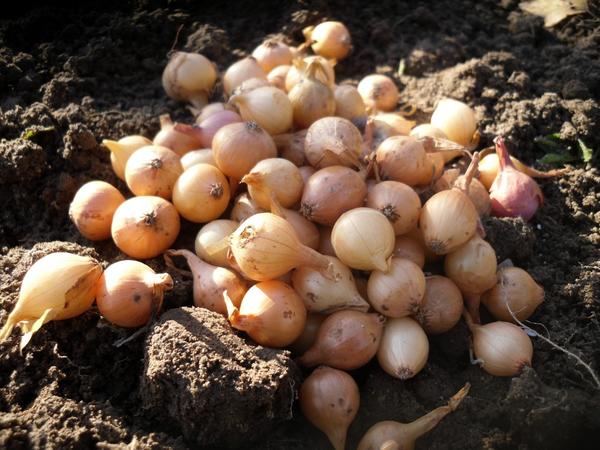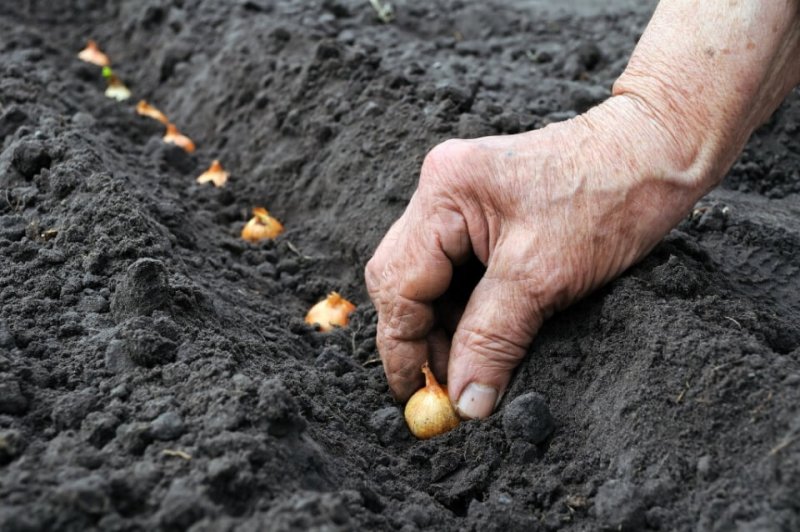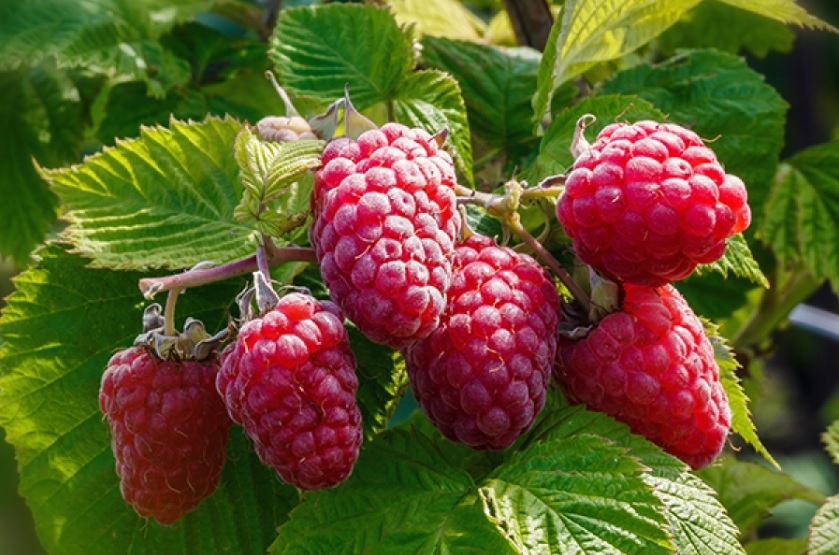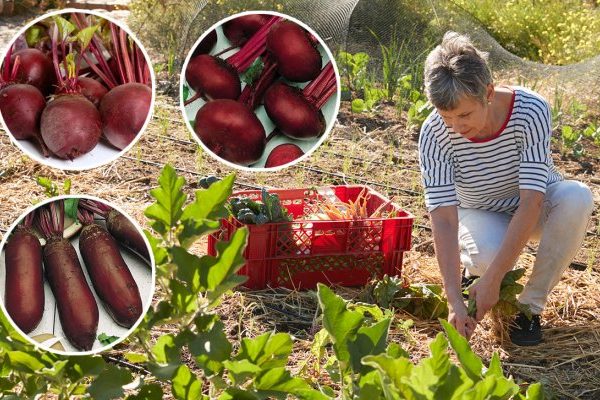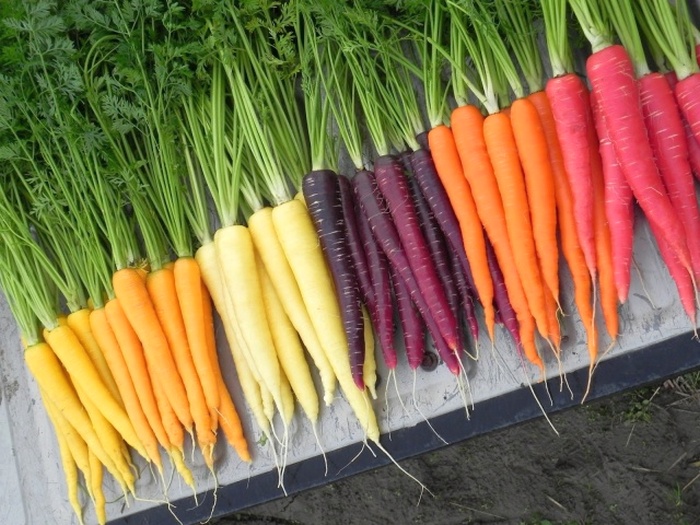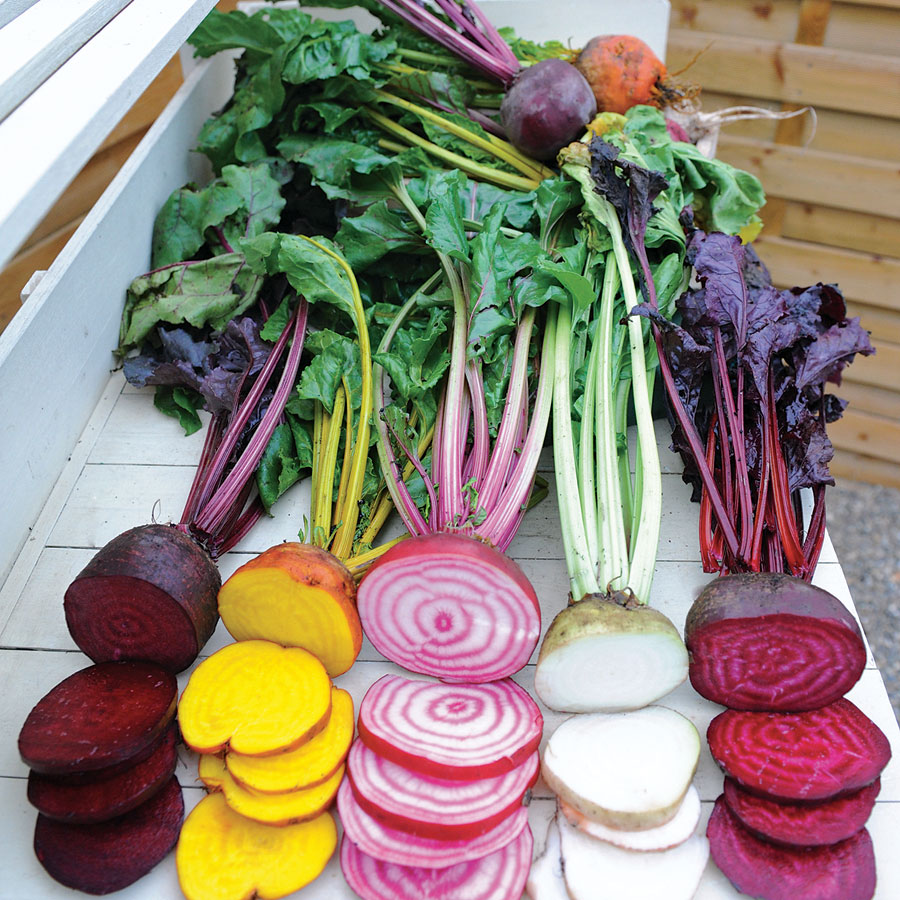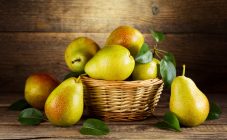Content:
This representative of the Liliaceae family is more than 6 thousand years old. The bow is even mentioned in one of the texts on the Cheops pyramid. In Russia, the vegetable is called a onion vegetable, because outwardly the bulb is too similar to a traditional domestic root vegetable.
About agricultural technology of culture
Onions are cultivated as an annual or a two-year crop rotation is used. In the second variant, seedlings are an intermediate planting material obtained from nigella seeds. The next year, small bulbs are planted in the ground to grow larger fruit.
The turnip is responsive to watering and feeding, but an excess of moisture and fertilizers will negatively affect the quality of the product. The head itself will turn out to be shallow, but it will give an abundant high feather and will actively shoot.
It is impossible to plant sevok in one place annually, otherwise diseases cannot be avoided. To find a new site, pay attention to predecessors. Onions should not be planted after their own kind and asparagus, but the beds where cucumbers, tomatoes, peas and potatoes previously grew are an excellent choice. You can also plant onions after corn and cabbage.
Having freed the garden bed from the predecessor culture in the fall, the site is dug up to the entire depth of the cultural layer. You can scatter organic fertilizers on the ground before digging or after it, in the spring, before planting, add more mineral water.
Description of varieties
Sevka varieties are constantly replenished with new specimens, at the moment there are a lot of them, so it's time for the newly-made gardener to get confused.
When choosing a variety, you should decide what criteria to pay attention to. First of all, you should give preference to local varieties, zoned for a specific region of the country. Then decide for what purposes they are cultivated. There are 2 main subspecies and one intermediate. Each variety is determined by its pronounced taste:
- sweet the variety is exclusively for fresh consumption (such onions are also called salad onions) and cannot be stored for a long time;
- at acute - a good percentage of keeping quality, some heads do not even lose their presentation, at least for six months;
- peninsular not stored as long as sharp ones; are quite suitable for fresh consumption, they have a pleasant soft bulbous taste.
To make it easier for summer residents to navigate a long list of catalogs, choosing which varieties of onion sets are the best, the article offers a small selection of the most popular specimens.
Onion varieties
| Name | Features: |
|---|---|
| Romy onion | Species early (no more than 85 days of cultivation), versatile in use. Red-violet scales with a silvery bloom adhere tightly to onions weighing 100-110 g. Inside, the pulp is juicy, white. It is appreciated for high ripening and productivity, keeping quality, absence of arrows |
| Alpha bow | Refers to early maturing varieties of a two-year turnover. Before harvesting, it ripens by 80% and matures as much as possible during storage. One - and two-bud bulbs, weighing 120 g, have a thin neck and brown scales. Commercial yield - about 250 kg / ha |
| Stuttgarter Rizny | · The most popular in Russian latitudes due to the high content of ascorbic acid in fruits and large heads (some reach a weight of 300 g).Popularly known as the Altai onion (although bred abroad); · Easily multiplies in all possible ways and gives amicable germination. When stored for up to six months, it does not lose its presentation; · Demanding to growing conditions. Susceptible to cervical rot and powdery mildew |
| Rumba bow | Medium ripeness, with a high yield (from 1 hectare you can take up to 350 centners). Suitable for ripening after harvesting. Grown as a biennial culture to obtain a turnip weighing 120 g. Dry scales are painted in a deep brown hue. The neck of the fetus is thick, sometimes there is a double-bud |
| Hercules | A hybrid of medium ripeness with a broadly elliptical shape of the fruit, which grows up to 160 g. It is characterized by a high stable yield. It is immune to rot and fusarium. Calmly tolerates any climatic conditions, therefore it is actively grown in all regions of the country |
| Radar bow | A hybrid from Holland of late ripeness. Recommended for winter sowing. Zoned into Siberia, the Urals and the north-west of the country. Semicircular, strong, with yellow scales, heads reach a mass of 300 g. Does not shoot and can be stored for a long time |
| Centurion | Bred by breeders from the Stuttgarter variety, but differs in a slightly elongated shape. High-yielding, with 100% germination, but medium-sized bulbs (up to 180 g). Grown from seed for sevka and not used for greens. The variety does not produce arrows, is not susceptible to disease and has a long shelf life (up to 8 months) |
| Albion | It is grown from seeds, gives a turnip of medium and large sizes of an even shape. Differs from "relatives" in white scales. Keeping quality is low, therefore it is more suitable for fresh use, conservation and drying |
| Roseanne bow (sometimes referred to as Rosson) | Fruit, pink with yellow spots, weighing 100 g, has a rounded shape. The variety is early - from the first shoots to lodging of the feather, 3 months pass. You can take up to 3 kg of turnips from one square. It is appreciated for stability, one hundred percent ripeness, keeping quality |
| Bamberger | Small turnips (up to 80 g) of medium ripeness have an elongated shape, pleasant taste and a ruddy yellow color. Use on a green onion. Sevok is perfectly stored until next season |
| Red Baron | An early variety of slightly rounded bulbs with red or purple plumage. Sevok is obtained weighing up to 40 g, a full-fledged head - up to 150 g. Propagated by all available methods, ripens perfectly and gives stable yields. But it requires regular attention to itself. It is often used in salads for its pleasant taste. |
| Myachkovsky bow | An early-ripening variety - a head from a set can be obtained in 81 days. At the time of ripening, the onion fruit is covered with rich yellow scales. Flat, medium density onions do not grow large - 40-70 g. From one square, on average, it turns out up to 0.5 kg of turnip |
| Olin's bow | Czech selection, cultivated in the Middle Volga and Central regions. Rounded onions are dense, of small mass (from 40 to 90 g) with yellow scales and 2-3 primordia. It takes no more than 80 days to grow a head from a set |
| Siberia | Despite its name, the variety originated in Holland and is only suitable for cultivation in the southern regions. Even good resistance to frost does not allow to actively breed this species in the middle lane. Grown on a turnip, not suitable for greenery. Juicy large bulbs are obtained both during spring and winter planting. |
| Sturon (homeland - Holland) (sometimes referred to as Citron) | It is considered the best early monocular onion variety. The heads are large - an average of 100 g, but can be grown up to 150 g. It has a stable germination and yield, goes exclusively to the turnip and is not used for forcing on the feather. Perfect for growing in the Moscow region, because zoned for regions with a cool climate. Resistant to typical onion diseases. It is harvested from the beds 10 days earlier than usual. Due to its good keeping quality and transportability, it is actively grown for commerce |
| Black Prince Bow | Rounded, beautiful bulbs of medium ripeness are covered with dark purple scales. Even in the northern regions, it reproduces well by seeds and gives a turnip weighing 100 g. With the seedling method, you can get a larger fruit. Low-nesting, ripens perfectly, stored for a long time |
| Globo | Summer residents are better known under the name "global". Great for breeding in all regions. From one square meter, you can get up to 12 kg of extra-large elliptical yellow turnips. Belongs to late varieties, has immunity to diseases, shelf life, but is not used for long-term storage |
| Red Ray (Rhea is sometimes said) | The red onion sets produce a smooth fruit with a delicate ruby hue and a semi-sharp taste. The composition contains about 13.5% dry matter |
When buying onion sets, varieties are chosen not only for their needs, but also take into account the ability of the culture to adapt to climatic features. If you can't buy the vending set in your hometown, you can contact one of the online stores, for example, the Moscow "Leroy Merlin" (you shouldn't pay attention to the archive tag) or the Kirov "Gardener". It is also worth paying attention to description of the variety onion Zolotnichok. Its homeland is Russia, it was bred specifically for cultivation in the Central and northern regions. Sevok is unilocular, has 2-3 rudiments, semi-sharp in taste. The average weight is from 35 to 60 g. The color of the scales is yellow-golden. The average yield is 1.1-1.8 kg / sq. m, although in the West Siberian region with good agricultural technology, you can get 3 kg.
Chuvash onions have recently ceased to be purchased due to the fear of bringing pests to the site - in 2017, mites were found in the seed material. As for the site "Luk Mechnikovsky", it has nothing to do with summer residents - medical news is presented here.
Planting onion sets in the middle lane
In central Russia, onions are grown in a two-year cultural turnover, getting sets from nigella in the first year and a large head only the next season. The optimal time for planting seedlings in open ground is from the end of April and during the first week of May. If planted earlier, the turnip will begin to shoot, which deteriorates the quality of the head.
But you don't have to year after year, so you need to choose the landing period not only with an eye on the lunar calendar, but also take into account folk signs. If in the 20th of April the bird cherry has not yet bloomed, do not rush to sowing.
Growing greens is preferable from sevka of a large fraction, which is planted in greenhouses in the middle lane in spring and early autumn, and in open beds in summer. When the feather grows, the onion is watered every 3 days and fed once with a urea solution.
To get excellent yields, it is necessary to cultivate zoned plants. For the middle lane, the best varieties of onion sets are already indicated in the table above: these are Sturon, Olina, Radar, Stuttgarter, Red Baron, Hercules, Centurion, Black Prince. You should also pay attention to other, no less interesting varieties.
Recommended onion varieties for the middle lane
| Variety | Features: |
|---|---|
| Carmen | · The bulb is distinguished by good taste characteristics with a slightly pronounced pungency. Sevka heads are round, slightly flattened, of medium density, weighing up to 120 g; · A high-yielding variety with a high content of ascorbic acid. Due to the presence of dry substances, it is well preserved throughout the winter |
| Stardust | · Appreciated by gardeners for maximum germination and high yield. Although the bulbs are small (30-50 g each), they are even and rounded; The variety is medium early, so it can be safely planted in the spring in open ground |
| Orion | The hybrid from the shores of foggy Albion attracted gardeners with incredibly large heads - about 200 g. The shape of the fruit is round, the variety is early maturing with high keeping rates |
| Shtur BS-20 | Smooth, rounded onion is rich in dry matter, therefore it is suitable for long-term storage without changing its taste. |
| Yukont | Of the early varieties, the turnip matures in 60-70 days. A simplified-rounded purple turnip reaches a mass of 100 g. From 1 sq. m you can get up to 2.5 kg of fruit with a pungent taste. Due to its high keeping quality, good presentation, it is popular in commercial cultivation. |
More detailed information on growing onion sets will be provided by the "Big Book of the Gardener and Gardener" (edited by GA Kizim), which should be adopted by novice summer residents. In addition to agrotechnical recommendations, the author mentions onion varieties that are worth paying attention to based on the characteristics of their region. Which onion a summer resident chooses for the garden depends solely on his preferences. But the fact that the breeding set should be of high quality is unambiguous. The second factor in the key to successful cultivation is correct planting, the third is painstaking care of the beds. The combination of agricultural technology allows you to avoid onion diseases and pest infestations.
